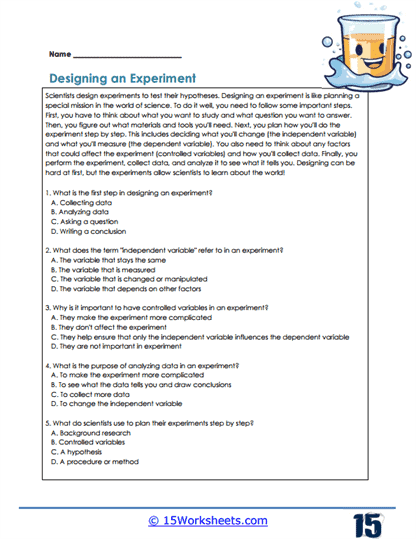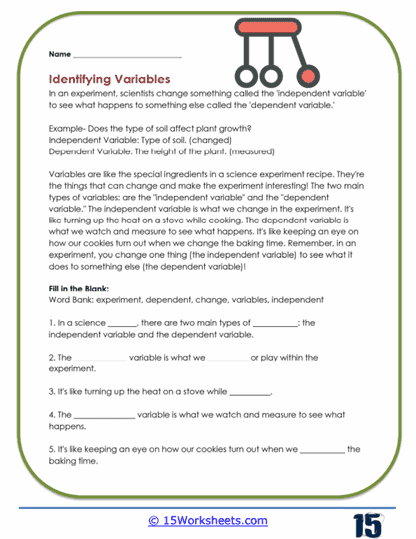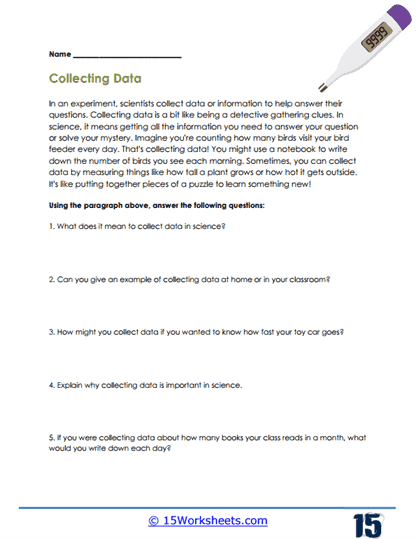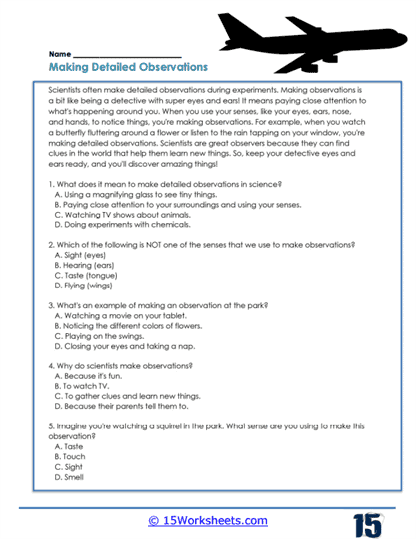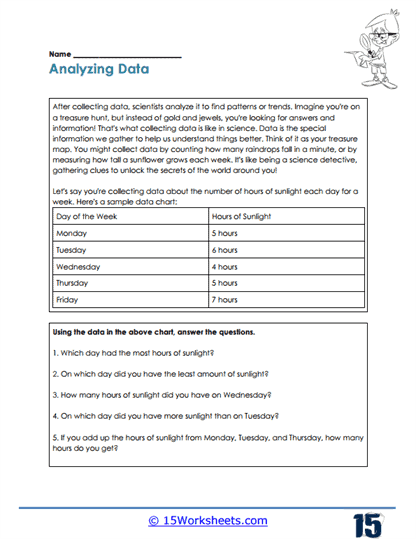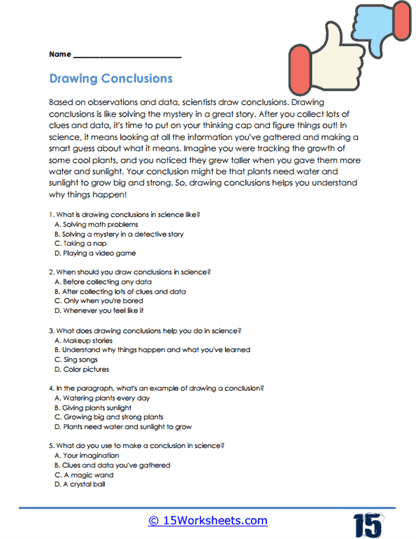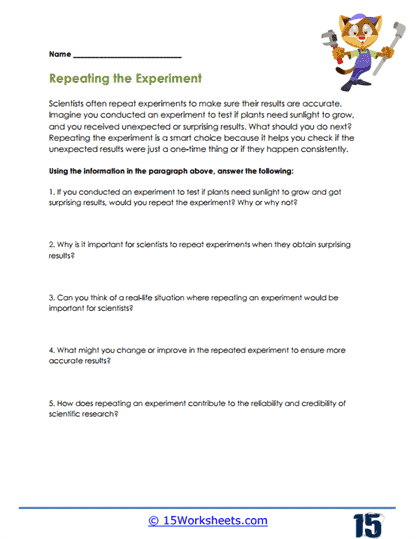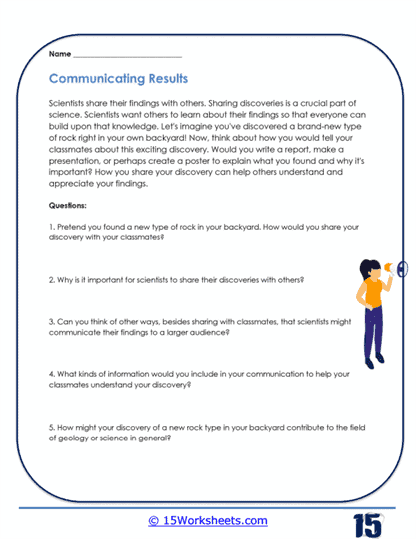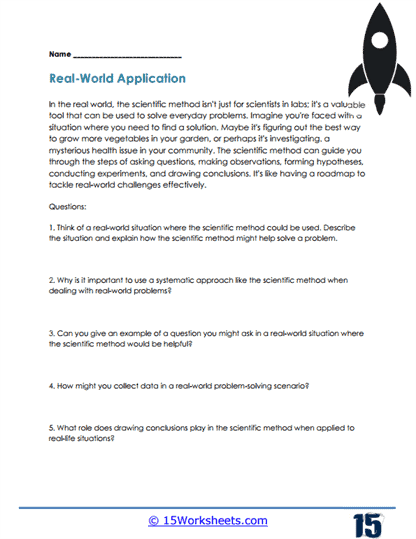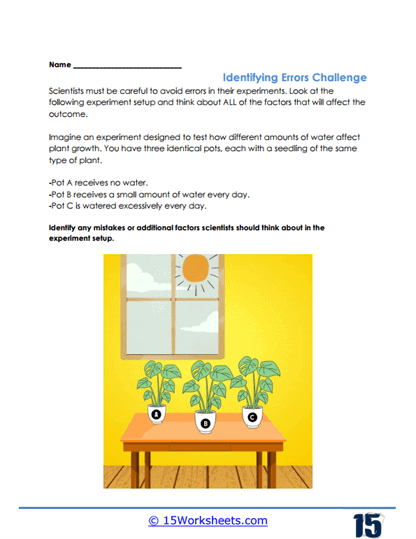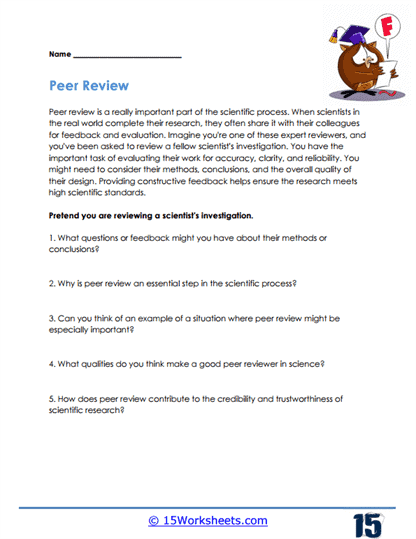Scientific Method Worksheets
About These 15 Worksheets
The scientific method is a systematic approach to answering questions about the natural world. It’s a fundamental process in science that allows researchers to make observations, formulate hypotheses, test these hypotheses through experiments, and then come to conclusions based on the results. Scientific Method worksheets are educational tools that help students understand, remember, and practice this method, ensuring that their inquiries are structured, reproducible, and evidence-based.
Understanding the Scientific Method is fundamental to the world of science, as it provides a systematic approach to conducting experiments, making observations, and drawing conclusions. These worksheets cover key aspects of the Scientific Method, from formulating hypotheses to analyzing data and reporting results. By engaging with these materials, students not only develop essential problem-solving skills but also gain a deeper appreciation for the scientific process, fostering a lifelong curiosity and a solid foundation for future scientific endeavors.
Components of the Scientific Method
Observation – The first step involves making an observation about the world. This can be something that is seen, heard, smelled, touched, or even tasted.
Question – After making an observation, a scientist will then ask a question about what they observed.
Hypothesis – This is a tentative answer to the question. It’s an educated guess based on prior knowledge and should be testable.
Experiment – To test the hypothesis, an experiment is conducted. This involves collecting data under controlled conditions to determine whether the hypothesis is supported.
Analysis – After the experiment, the data is analyzed to determine its meaning.
Conclusion – Based on the analysis, a conclusion is made, which either supports or refutes the hypothesis.
Communication – Results, whether supporting or refuting the hypothesis, are then communicated to the larger scientific community.
Types of Problems and Exercises
Ordering Tasks – Students may be given a jumbled list of the steps of the scientific method and asked to arrange them in the correct sequence.
Scenario Analysis – Students might be provided with a brief description of a scientific investigation and asked to identify which part of the description corresponds to each step of the scientific method. For instance – “Jenna noticed that her plants grew taller when she played music. She decided to play rock music to one plant and no music to another to see which grew taller.” Students would then identify the observation, question, hypothesis, and so on.
Hypothesis Creation – Given a particular observation and question, students might be tasked with formulating a suitable hypothesis. For instance, if the observation is “Birds fly south in the fall,” a related question might be “Why do birds fly south in the fall?” and students would formulate hypotheses in response.
Experiment Design – A pivotal skill in the scientific method is designing experiments. Students might be presented with a hypothesis and then asked to outline a basic experiment to test it, considering variables, controls, and what kind of data to collect.
Data Interpretation – Worksheets might present fictional experimental data for students to analyze. This could involve tasks such as calculating averages, identifying patterns, or even plotting graphs.
Drawing Conclusions – After analyzing data, students might be prompted to determine whether the results support or refute a given hypothesis and to justify their conclusions.
Error Analysis – Science is about learning, and not all experiments go as planned. Exercises could involve descriptions of experiments with flaws or errors, and students would need to identify and discuss these shortcomings.
Multiple Choice Questions – These can span any component of the scientific method, from its sequence to deeper conceptual understanding. For instance, “Which of the following is NOT a component of the scientific method?” with options to choose from.
Real-world Applications – Encouraging students to think about how they’d use the scientific method in their lives can make the concept more tangible. For instance, if they notice a pattern (like their phone battery draining faster), how could they use the scientific method to investigate?
Communication Practice – Since the last step of the scientific method involves sharing findings, students might be tasked with writing a short report or even preparing a mock presentation on their results.
By breaking down this universal method into its constituent parts and offering a variety of exercises to practice each step, these worksheets ensure that students internalize a systematic, evidence-based approach to inquiry. This not only facilitates scientific discoveries but also fosters critical thinking skills that are valuable in numerous facets of life. Whether we realize it or not, we all employ aspects of the scientific method in our daily problem-solving. Through these worksheets, students refine and harness this natural propensity towards structured investigation, laying the foundation for future academic and real-world endeavors.





